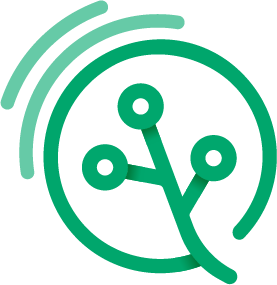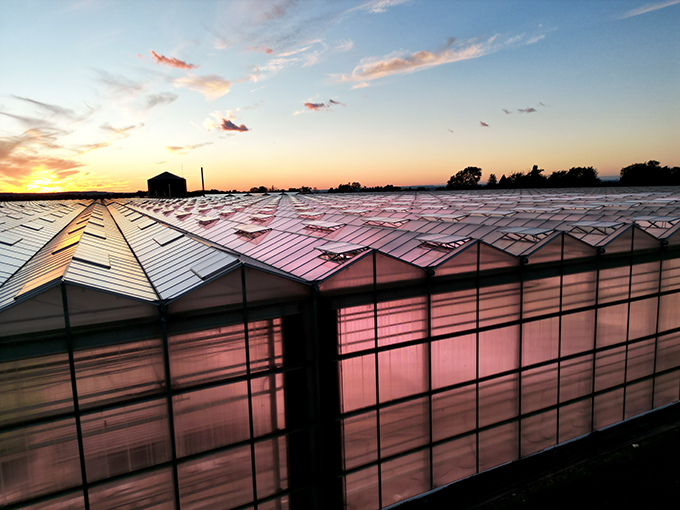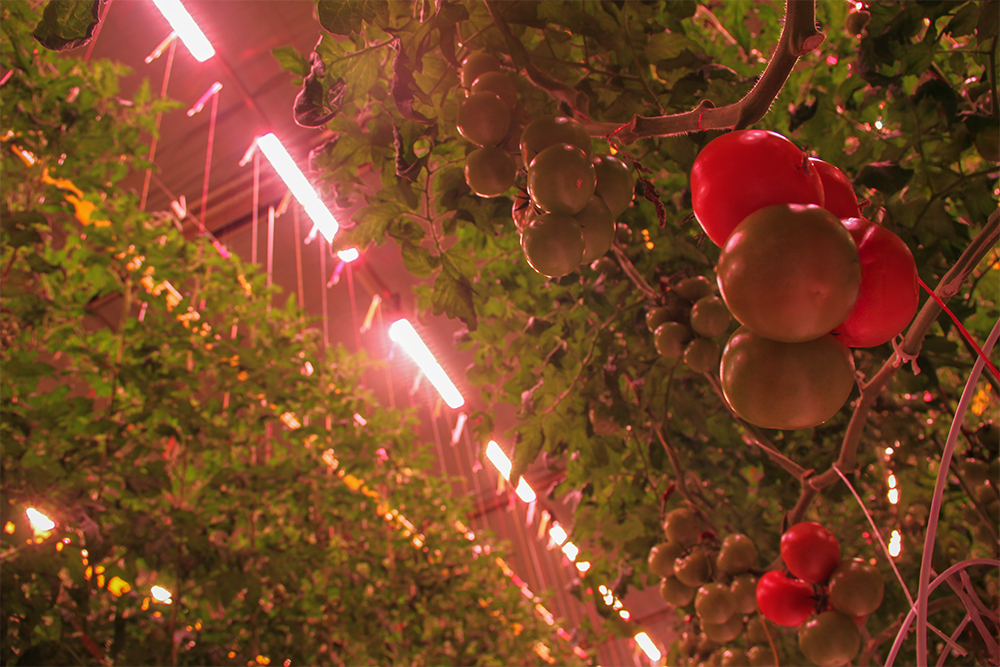Tomatoes
Tomatoworld
Tomatoworld houses the latest technologies for Westland’s garden greenhouses.
Background Information on Tomatoworld
Tomatoworld is the innovation centre of horticultural greenhouses in Westland where high-tech companies, start-ups and students collaborate on pioneering technologies. It is a 500m2 knowledge centre where visitors can learn all about the sustainable and innovative cultivation methods used in the Netherlands.
Established in 2007 by six tomato growers, the goal is to increase awareness of the Dutch horticulture sector. Their mission and vision are to focus on technological advancements that contribute to nutrition, health, and the future of our planet. With their ever-evolving knowledge, they continuously improve efficient production methods to make horticulture more sustainable.
Visitors learn about the latest technologies in horticulture, such as 5G, loT, AI and robotics. As Tomatoworld itself describes on its website, ‘Tomatoworld is Westland’s horticultural greenhouse experience.’
The Westland is known for its greenhouse horticulture, using greenhouses to optimize growing conditions year-round, despite the constantly changing weather conditions outside. The greenhouses use advanced techniques to ensure an energy-efficient and sustainable method of cultivation.
Tomatoworld’s decision to switch from HPS lights to LED lights was mainly driven by the aim to reduce energy consumption. Additionally, the new lighting was designed to improve crop visibility for visitors while also supporting research activities involving cameras, sensors, and robots.
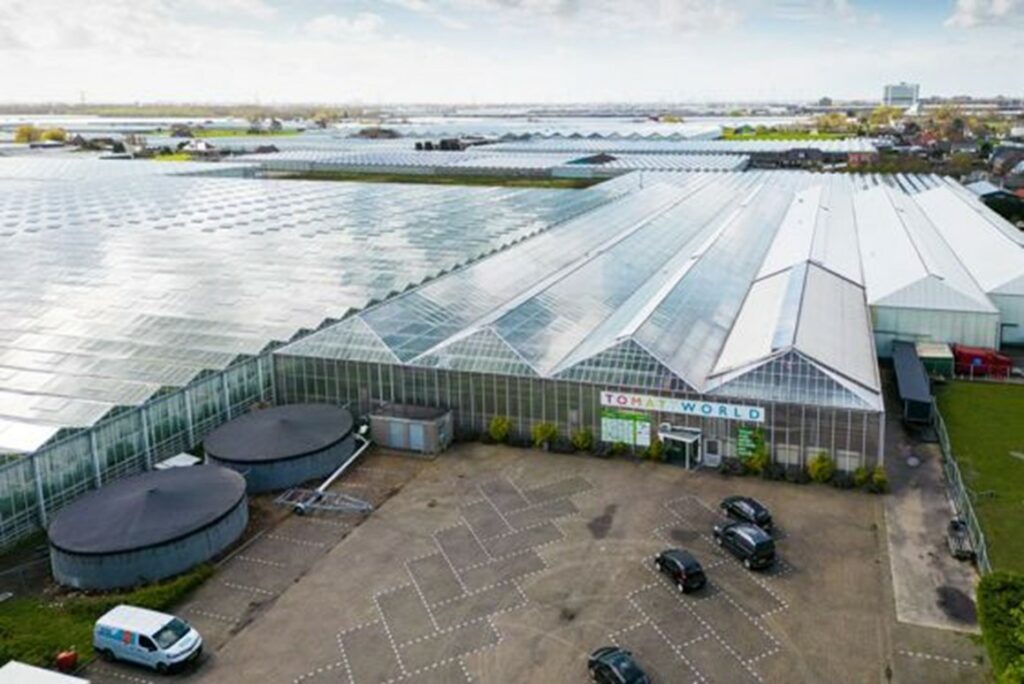
Participation and installation by Heliospectra:
Through Orance, Heliospectra was introduced. Orance is a consultancy company for grow light systems and a strategic, brand-independent partner for the global horticultural market. The Mitra X R80 LED fixtures were chosen for their ability to meet Tomatoworld’s needs of reducing energie. The R80 spectrum is located at 10% green to optimize energy efficiency and provide natural light for better crop visibility, supporting under-canopy sensing with camera sensors and robots. The MITRA X R80 LED fixtures were chosen for their ability to meet Tomatoworld’s needs. The MITRA X series offers a wide range of wattages, from 325 to 1500 watts, and multiple efficient spectrum options including 40% 60%, 80%, and 90% red, with and without far-red.
An important aspect for Tomatoworld is that the grow lights are not interfering with the many sensors and cameras at Tomatoworld. The Heliospectra lamps dim based on power reduction and not on very fast on/off switching. The fast on/off switching (PWM – Pulse Width Modulation) has the disadvantage that this causes problems when sensors or cameras operate at the same frequency. For example, all lamps on Signify drivers operate based on PWM with a frequency of 1000Hz.
The R80 spectrum was chosen because it combines good visibility for people (and camera systems) with high efficiency. For people, anything above 8% green light is pleasant and at 12% it is almost optimal. The R80 spectrum contains 11% green. This 11% green light contributes to better visibility of the crops, supports various sensors with cameras and robots and of course benefits the many visitors of Tomatoworld. For tomato cultivation, a spectrum of 5% Blue, 5% green and 90% red is usually used, which is somewhat more efficient, but limits visibility.
Depending on the spectrum, these luminaires can achieve efficacy of up to 4.0 µmol/J.
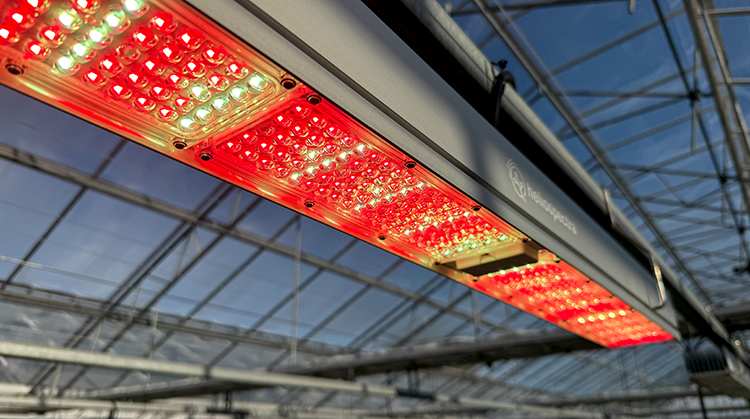
HelioCORE control system
The lighting system can be used separately from a climate computer, or integrated. At Tomatoworld, the proprietary HelioCORE system is integrated into the Hoogendoorn system, allowing the LED lighting to be controlled via the climate computer to coordinate light, CO2 and climate and optimize yield. Heliospectra has a very far-reaching integration via the Horticulture Lighting Protocol (HLP) and supports all 5 levels of the HLP protocol.
Standalone, the HelioCORE system also makes it possible to adjust the light scenarios in the greenhouse at any time, which contributes to more efficient growth and higher yields. For example, daily and weekly cycles are easy to program, as well as energy management based on weather forecasts and energy prices.
The helioCORE system works together with a SAR sensor platform from Sense NL, which collects detailed data on the environmental conditions in the greenhouse. By combining these technologies, growers can gain accurate insights and fully optimize their cultivation process, resulting in higher production and a more sustainable crop. The integrated system ensures that growers achieve the best results while minimizing their energy consumption.
Optimizing Growth with LED Lighting and Smart Technology:
The change from HPS- to LED lights reduces energy consumption and increases yield for tomato plants. One of the main reasons why LED lighting works so well in the tomato industry is that tomatoes can be grown under a very efficient spectrum. The plant is not so sensitive to a broad spectrum. The plants mainly want a lot of light. In spring and summer, the LEDs also provide the necessary light without excess heat.
The fixtures, in combination with helioCORE, enable growers to create customized growth zones within the greenhouse. This means they can optimize the growth phases of the plant, so that they can provide exactly the right amount of light and the optimum spectrum for photosynthesis. For example, more light can be provided if there is shade from a packaging area or if the greenhouse is colder on the side of the downwind gable.
It is also possible to optimise growth; with the flexibility of multi-channel LEDs, growers can adjust the colour to optimally adjust the balance in plant development. By applying precisely tuned lighting recipes, crop growth can be optimised, resulting in higher yields and more efficient energy consumption.
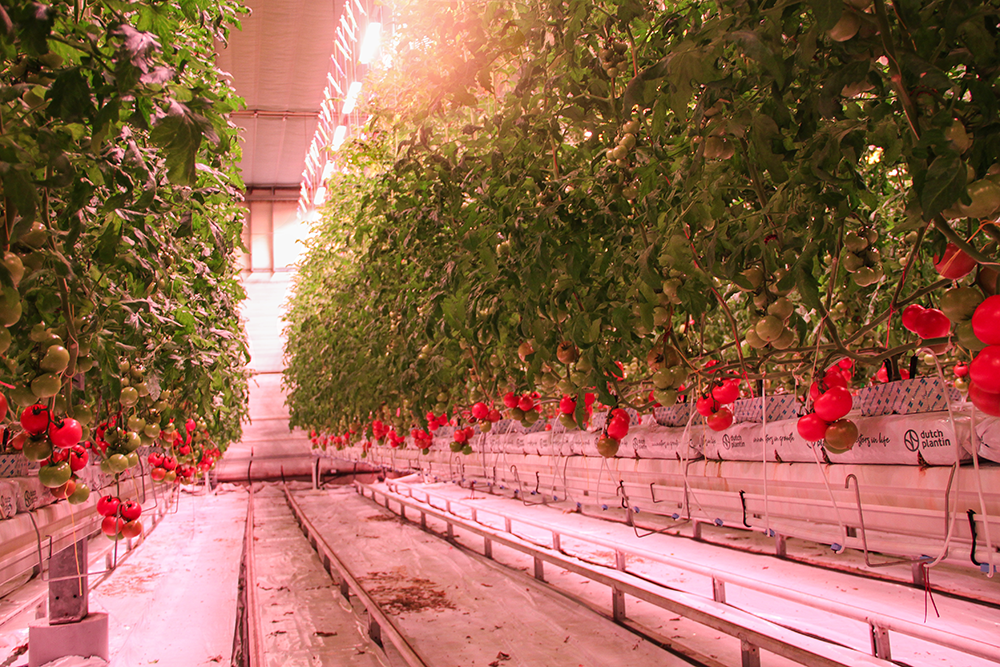
Latest technologies at Tomatoworld
The Tomatoworld greenhouse is also part of a field and innovation lab for data-driven automated cultivation and robotics. Here, new technologies are tested to improve the horticultural sector and investigate the best methods for growing tomatoes. In this lab, high-tech companies evaluate innovative technologies.
In line with this, we recently started testing Heliospectra’s new biofeedback sensor, helioSENSE. The use of biosensors is being introduced to monitor and analyze energy consumption in the greenhouse. Based on the plant data, energy consumption can be managed more intelligently and adjusted where necessary. All of this could transform the future of agriculture.
The plant lab and robolab offers an ideal environment for developing and refining solutions in automated cultivation processes, using data analysis, sensor technology and artificial intelligence. Here, new techniques are evaluated that enable more efficient, sustainable and precise cultivation. This is done by using robotics for tasks such as plant monitoring, harvesting and sorting methods. The test environment enables companies to put their technologies into practice and contribute to the further optimization of the horticultural sector.
For example, the communication of various sensors, robots and other equipment is also tested in a 5G network. This makes it the first 5G network in a greenhouse.
Get in touch with us!
From custom light planning, to tailored quotes, and everything in between,
our team of horticulture experts is always ready to assist.
